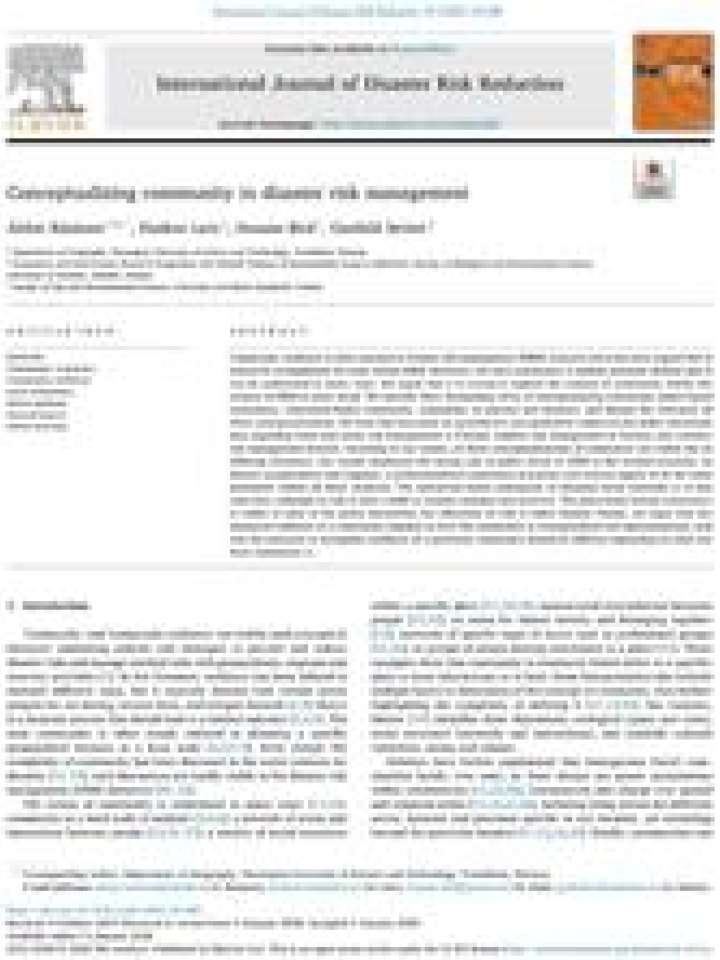Conceptualizing community in disaster risk management
Community resilience is often assessed in disaster risk management (DRM) research and it has been argued that it should be strengthened for more robust DRM. However, the term community is seldom precisely defined and it can be understood in many ways. It is argued that it is crucial to explore the concept of community within the context of DRM in more detail. Here are identified three dominating views of conceptualizing community (place-based community, interaction-based community, community of practice and interest), and discuss the relevance of these conceptualizations. The discussion is based on quantitative and qualitative empirical and policy document data regarding flood and storm risk management in Finland, wildfire risk management in Norway and volcanic risk management Iceland. According to these results, all three conceptualizations of community are visible but in differing situations. The results emphasize the strong role of public sector in DRM in the studied countries. In disaster preparedness and response, a professionalized community of practice and interest appear to be the most prominent within all three countries. The interaction-based community of informal social networks is of less relevance, although its role is more visible in disaster response and recovery. The place-based (local) community is visible in some of the policy documents, but otherwise its role is rather limited. Finally, it is argued that the measured resilience of a community depends on how the community is conceptualized and operationalized, and that the measures to strengthen resilience of a particular community should be different depending on what the focal community is.
Explore further
